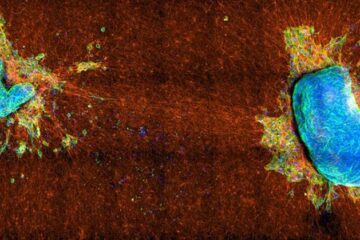Contrast-enhanced MRI could play a key role in differentiating between common types of arthritis

Rheumatoid arthritis is a long-term disease that leads to inflammation of the joints and surrounding tissues. Psoriatic arthritis is associated with psoriasis of the skin and is usually confined to the knees, ankles, and joints in the feet. “Clinically, it may be difficult to distinguish psoriatic arthritis from rheumatoid arthritis because the symptoms of both diseases are similar and the diagnostic tests currently available to aid in the differentiation of psoriatic and rheumatoid arthritis are not always sufficient,” said Nina F. Schwenzer, MD, lead author of the study.
The study, performed at the University Hospital of Tubingen in Tubingen, Germany, included 45 patients (31 patients with rheumatoid arthritis and 14 with psoriatic arthritis) who were imaged using contrast-enhanced MRI. “The perfusion (or uptake) of contrast media in psoriatic arthritis and rheumatoid arthritis is presumed to be different,” said Schwenzer. Typically, one will not be able to see a difference until after 15 minutes after the contrast material is given. “Our study revealed a significant difference in perfusion between those patients with rheumatoid arthritis and psoriatic arthritis after 15 minutes. However, since it was a small group of patients and there was an overlap in perfusion values between both types of arthritis, a diagnosis could not be led by contrast-enhanced MRI alone. Our results are nonetheless promising though,” she said.
“In the past, the treatment strategy for patients with psoriatic arthritis was based on that for patients with rheumatoid arthritis. Recent research indicates that the therapeutic management, including medication and therapy monitoring, has to be adapted for each type of arthritis,” said Schwenzer.
“As our study suggests, the use of contrast-enhanced MRI could play an important role in differentiating psoriatic arthritis from rheumatoid arthritis,” she said.
This study appears in the March issue of the American Journal of Roentgenology. For a copy of the full study or to request an interview with Dr. Schwenzer, please contact Heather Curry via email at hcurry@acr-arrs.org or at 703-390-9822.
About ARRS
The American Roentgen Ray Society (ARRS) was founded in 1900 and is the oldest radiology society in the United States. Its monthly journal, the American Journal of Roentgenology, began publication in 1906. Radiologists from all over the world attend the ARRS annual meeting to participate in instructional courses, scientific paper presentations and scientific and commercial exhibits related to the field of radiology. The Society is named after the first Nobel Laureate in Physics, Wilhelm Röentgen, who discovered the x-ray in 1895.
Media Contact
More Information:
http://www.acr-arrs.orgAll latest news from the category: Medical Engineering
The development of medical equipment, products and technical procedures is characterized by high research and development costs in a variety of fields related to the study of human medicine.
innovations-report provides informative and stimulating reports and articles on topics ranging from imaging processes, cell and tissue techniques, optical techniques, implants, orthopedic aids, clinical and medical office equipment, dialysis systems and x-ray/radiation monitoring devices to endoscopy, ultrasound, surgical techniques, and dental materials.
Newest articles

Decoding development: mRNA’s role in embryo formation
A new study at Hebrew University reveals insights into mRNA regulation during embryonic development. The study combines single-cell RNA-Seq and metabolic labeling in zebrafish embryos, distinguishing between newly-transcribed and pre-existing…

Study sheds light on cancer cell ‘tug-of-war’
How cancer cells tug against each other determines whether they can migrate elsewhere in the body. Understanding how cancerous cells spread from a primary tumor is important for any number…

Latest generation of self-dissolving stents
Magnesium implants support coronary arteries and keep them open. Constricted coronary arteries harbor dangers: Because the heart is not supplied with blood properly, this can lead to pain, cardiac arrhythmia,…





















